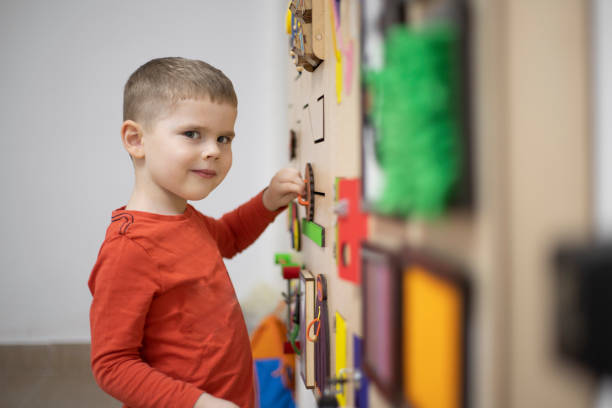Autism Therapy
Autism Therapy
Children with Autism (ASD) come to us at Crafting Lives at varying ages and at different levels of severity. Depending upon the diagnosis and thorough assessment of the child, the line of intervention is chosen. It is always seen that early intervention has been a major determinant for later development. We have experienced that when children come as early as 1.5-2.5 years, they show the best development across domains. ASD is a spectrum, hence presents itself differently in different individuals. Still, there are some common characteristics and lines of intervention, which are given as under.
Autism is a typical neuro-developmental disorder that generally appears during the first three years of life. It mainly affects brain areas controlling language, social interaction and abstract thought. Other characteristics associated with autism are engagement in repetitive activities and stereotyped movements, resistance to environmental change or change in daily routines and unusual responses to sensory experiences.

Common Red Flags Of Autism
They may also show problems in non-verbal communication like through hand gestures, eye contact and facial expressions. They may also be unable to understand body language and nuances of vocal tones.
Infants with autism show less attention to social stimuli, smile and look at others less often, and most of them do not understand normal social cues and find even simple social games challenging. These children also have difficulty understanding other people’s beliefs, attitudes, and emotions.
People with autism usually have varying degrees of restricted, repetitive and stereotyped patterns of behavior and interests. This stereotypical pattern poses challenges for the adult trying to work with him/her.
These vary in autism from mild to severe hypo or hypersensitivities. This often results in people with autism covering their ears, avoiding or reacting negatively to brightly lit areas, or on the other hand crashing hard into sofas and craving strong bear hugs.
Many autistic children exhibit severely disruptive behavior mostly in the form of self-injuries, where the child purposely inflicts physical damage to his body. Most common of these are head banging and self-biting of hands and wrists.

Intervention Approaches
As the characteristics of children with autism fall on a large spectrum from mild to moderate to severe, intervention with them also needs to consider these disparities. Hence no single line of intervention is adapted for all children and always has to be individually planned depending on thorough assessment of the child. Some of the intervention methods typically adopted in Autism Therapy are:
This therapy uses rewards, or positive reinforcement, to teach desirable behaviors and reduce ones that cause problems. ABA (applied behavior analysis) is the most widely accepted approach for behavior therapy.
Play is widely recognized as a way of practicing a range of cognitive and socio-emotional skills and provides an ideal framework for teaching new skills and ensuring their generalization.
The central idea of this therapy is to improve sensory processing so that more sensations will be effectively registered and modulated.
This addresses the communication difficulties that children with autism often struggle with. It is used to improve verbal skills and language ability as well as teach nonverbal communication skills and social skills. Pecs (picture exchange communication system) is an augmentative communication system which is designed to teach children with limited functional communication skills to initiate interacting and communicating within a social context.
These are widely used to improve undeveloped social skills. Stories are designed to help persons with Autism Spectrum Disorder (ASD) understand the feelings, ideas and point of view of others, or to suggest an alternate response to a particular situation.
This is a widely used intervention program which works on certain guiding principles viz. Maximizing adaptation by teaching new adaptive skills, developing environmental modifications to accommodate the child’s deficits, to maintain parent-teacher collaboration and to prevent behavior problems from developing.








